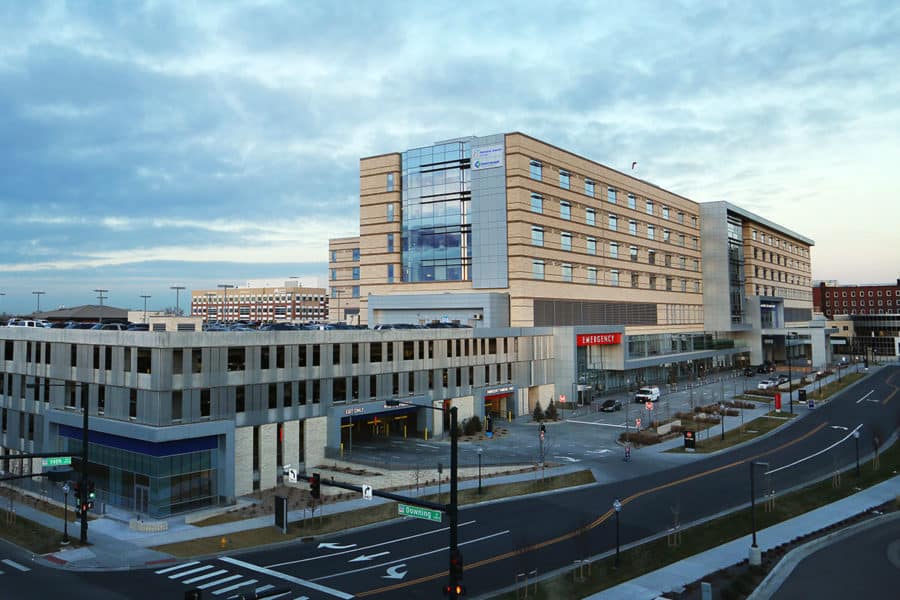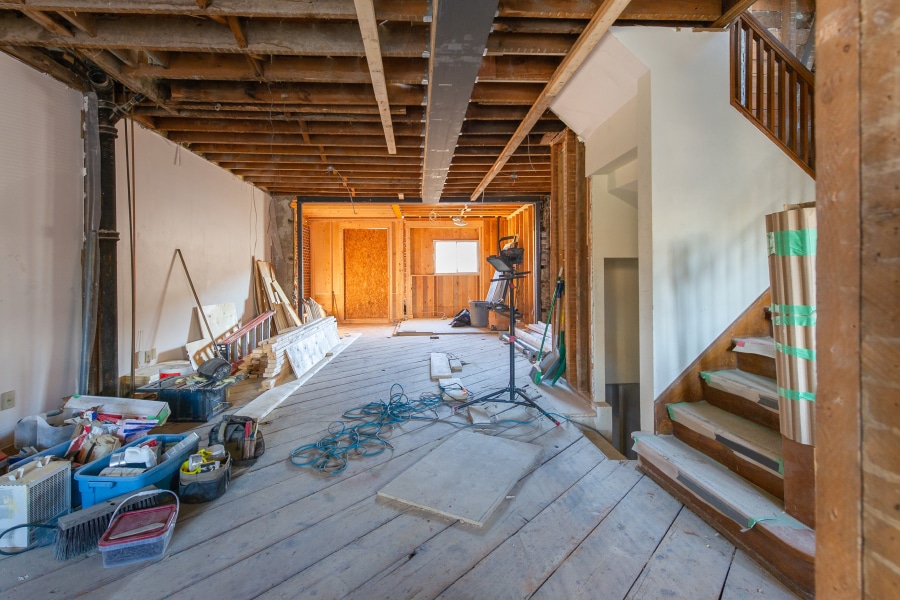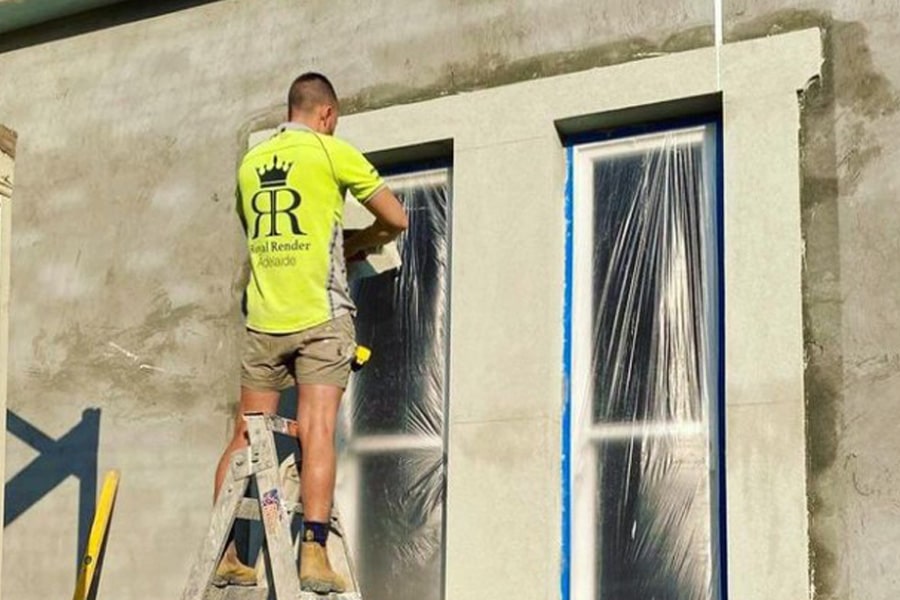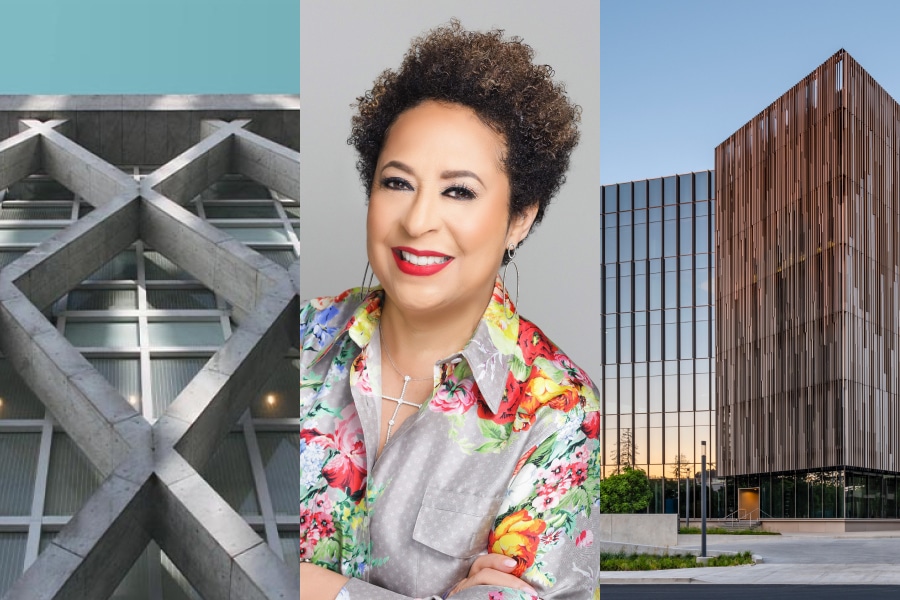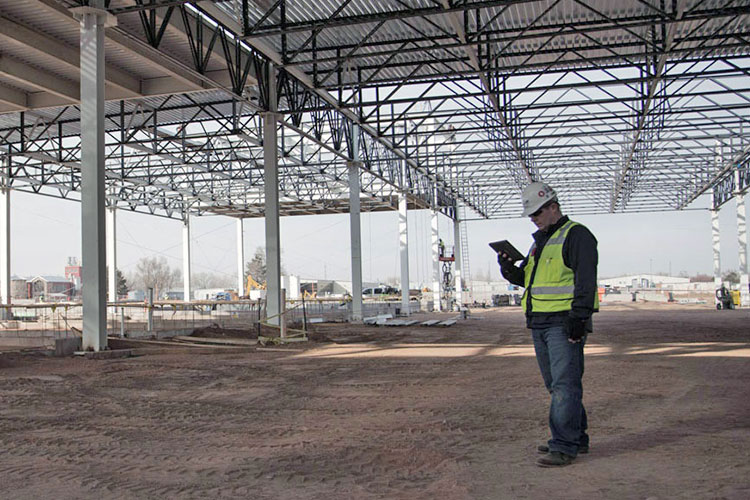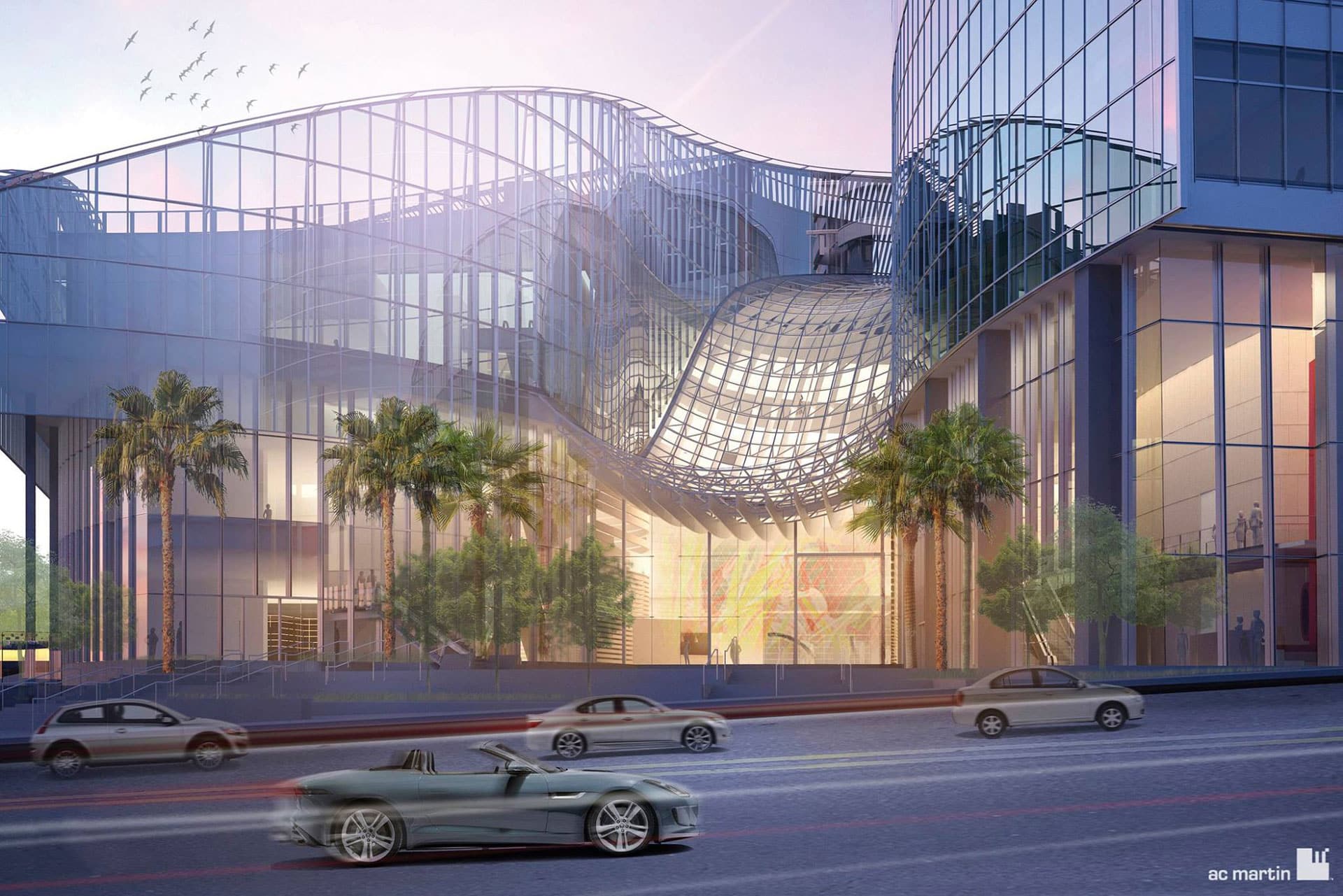Imagine building an 831,000 square foot hospital in 30 months. That was the daunting timeline Mortenson Construction faced as they began work on the Saint Joseph Hospital in Denver, CO. Fortunately, they wouldn’t have to do it alone. Experts at executing the most complex projects by integrating all their partners through technology, Mortenson championed the use of digital collaboration solutions to help everyone make informed decisions faster.
“Today, owners are demanding faster-paced schedules. Architects are getting less time to design, and we have less time to build. So for us to be viable, one of the things we can do better and more efficiently is collaboration.”
“The importance of time in this project can’t be underestimated,” explains Bain Farris, President and CEO of Saint Joseph Hospital. “The timeline was that looming cloud over everybody, but it created the environment for innovation to really occur.”
“Today, owners are demanding faster-paced schedules. Architects are getting less time to design, and we have less time to build. So for us to be viable, one of the things we can do better and more efficiently is collaboration,” says Chris Boal, Integrated Construction Manager at Mortenson’s Denver operating group and an integral part of the virtual design & construction (VDC) team. Mortenson’s VDC team has been bridging the gap between the model and the field for two decades, using applications like Revit, Navisworks and Bluebeam Revu.
Mortenson introduced Revu, a PDF-based digital workflow solution, into the project to help everyone work together more effectively. ”We couldn’t have everyone in the same room,” Boal emphasizes, “so we had to have a virtual war room, where we’re talking ‘on’ the same piece of paper and marking up the same drawings.” The result was an unprecedented cohesiveness among stakeholders, regardless of their discipline or where they were located.
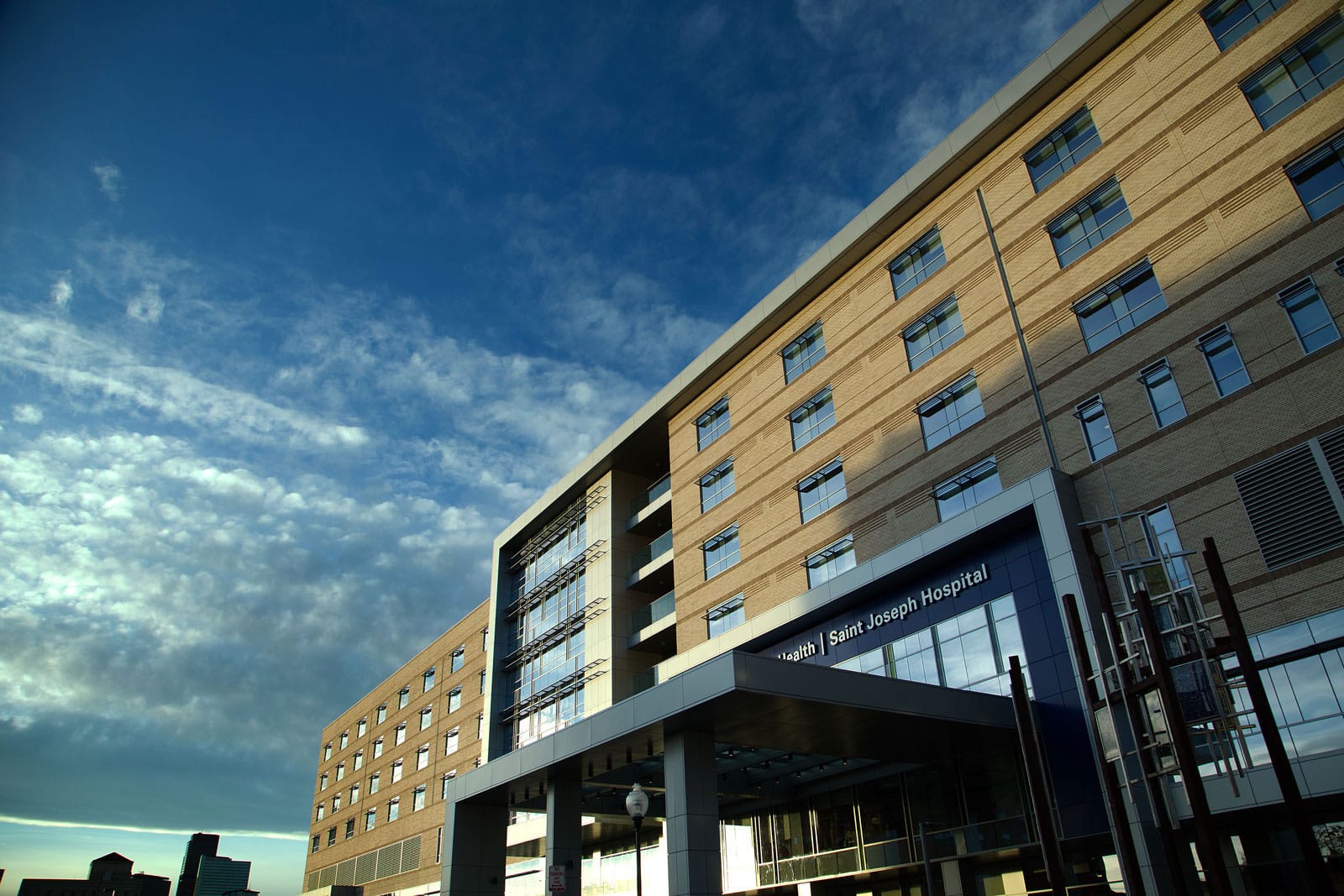
Bluebeam Studio, Revu’s built-in cloud-based document collaboration tool, became the platform for real-time drawing review and coordination. Using Studio, the inherent push and pull between design intent and constructability could happen on one shared drawing set, streamlining the RFI and submittal processes. Sarah Simpson, a Principal at H+L Architecture, one of the three design firms contracted for the project, remembers the multi-disciplinary Studio Sessions when Mortenson, their subs and all of H+L’s sub-consultants were able to look at the same information. “The only way successful projects can be delivered today is to have these highly collaborative, real-time working relationships between design and construction partners,” she explains.“I don’t even know how many months we saved, but it had to be a fraction of the time we normally spend doing reviews.”
Starting with the early phases of the project, using Studio opened up lines of communication between key stakeholders who were traditionally part of the decision-making process further down the line. “Typically, when we talk to general contractors, our consultants and their subs are not involved yet,” H+L architect Mike Grose acknowledges. With a 30-month hospital build, there simply wasn’t time to wait. “Revu streamlined us. Instead of making copies, scanning them and emailing them out to the team, everybody had the information immediately, with everyone’s perspectives in one place. That’s a big deal when you have to review over 3,000 hardware sets.”
“I don’t even know how many months we saved, but it had to be a fraction of the time we normally spend doing reviews,” concurs Dale Clingner, associate architect at Davis Partnership, another design firm on the project. “We were doing a peer review with four to five architects here in the office: one responsible for codes, another for standards, and so on. After everyone agreed on a detail, we would move on. It happened in real time, right in front of everybody, as opposed to sending it out, waiting for a response, and then sending it along to someone else—we were able to do it all at once.”

Going From Decision to Execution Faster
Not only did collaboration through Studio accelerate the decision-making process, it also simultaneously created approved action items that could be accessed quickly in the field. “Studio provided two key components: collaboration and documentation. In the construction industry, it’s all about documentation. If you don’t have it written down, it literally never happened,” says Nick Pfenning, a Mortenson Superintendent on the project. “We were to a point where we would get all the information vetted out with all the parties and then literally start the rough end in the field the next day.”
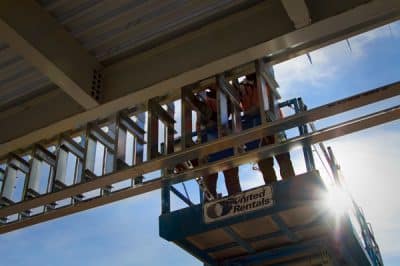
Having multiple stakeholders on the same page at the same time was never more impactful than during equipment coordination. According to Amanda Fitzjarrald, Revit Model Manager for H+L on the project, “MRI, CT and OR equipment would be four years old by the time Saint Joseph was completed, so we didn’t coordinate equipment until after the owners procured it in the final construction phase.” With just 10 months left before the hospital opened, Mortenson, H+L and their consultants engaged in a series of Studio Sessions that resulted in numerous design changes. In many cases, she says, “Allotted sizes for equipment and tables were different, meaning the cores of the floors to support them had to be adjusted. Three inches doesn’t seem like a lot until you consider lights and booms for over 20 operating rooms.”
Mortenson took it to the next level by inviting owner representatives and end users to join the conversation. “We held a series of ‘design scrub coordination’ meetings,” recalls Pfenning, “where all stakeholders, consultants, and even the owner reps, doctors and nurses reviewed drawings associated with a space: equipment, power, data, furniture, layout and lighting. We would all figure out issues, solve problems and markup the drawings to ensure everything was placed where it needed to be. In the end, we had one source of truth that could be sent out to the field to initiate construction.”
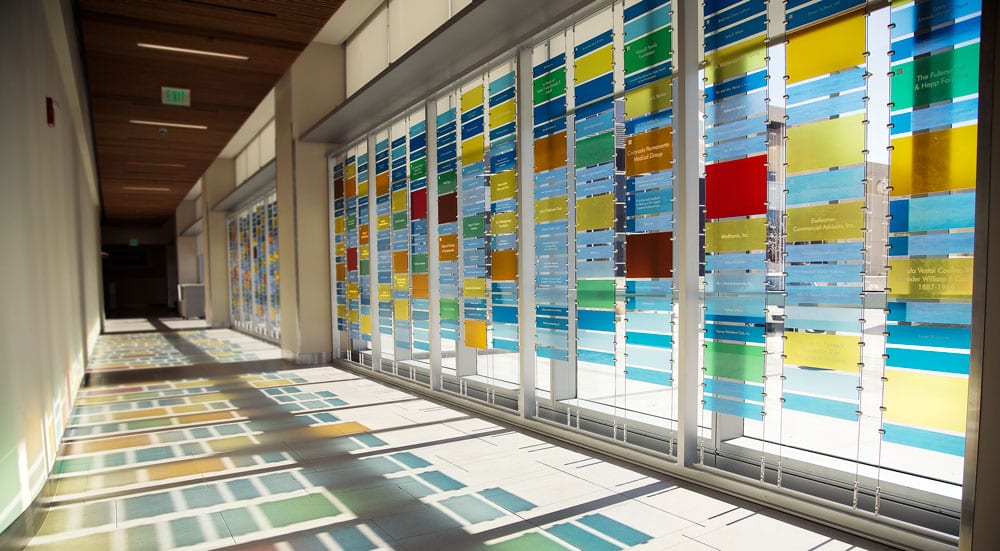
Changing the Conversation
Part of Mortenson’s reputation for successfully delivering the most difficult projects is how they leverage technology to make owners a part of the success. “Construction is not our customer’s core business; it’s our business,” says Maja Rosenquist, Vice President and General Manager of Mortenson’s Denver operating group, “which is why we use technology to clearly present the most logical outcomes and provide certainty of performance.”
When 3D PDF capabilities were introduced into Revu, construction on Saint Joseph Hospital was already full speed ahead. With their expertise in the 3D environment, Mortenson quickly integrated the new visual communication tools as a way to share model details with those who did not normally use design applications—and it changed the conversation. “Putting the model in the hands of the leadership was priceless,” says Boal. “It helped them see what we see, and brought them into the process.”
Pfenning illustrates this when describing one of the site walks he administered to help end users and owner reps envision how a room would look when finished: “We held up the model as a 3D PDF using Revu on a tablet, and showed them what the equipment was going to look like, where the head of the bed was, where the patient was going to be, where the family was going to sit. That part of the puzzle was really a good way to help them visualize what the room would look like in the finished state.”
Beyond just providing greater clarity, 3D PDFs enabled the owners to view and interact with the model in a universal file format they already understood, raising the level of their involvement in the entire project. “Immersive environments enhance the decision-making process for project stakeholders,” says Frank Sarno, Mortenson’s Director of Project Controls. “By visualizing the project in the 3D model and through virtual mockups, the project team can discuss design intent and constructability in a much richer way.”
Delivering One Shared Purpose
Today, Saint Joseph Hospital is a busy place of healing—it’s been that way since it opened on December 13, 2014, two weeks before the January 1 construction deadline. Approximately 200 patients were transferred into the hospital that first day, and 35 underwent surgery there 48 hours later. Visitors passed through the large revolving front door, known as “5280” by the builders because it is situated exactly one mile above sea level. Loved ones gathered by the exquisite staircase—the only one visible in the lobby, just as H+L imagined it. Patients, visitors and staff who sought sanctuary found peace in the chapel, built with pieces carefully brought over from the original hospital. This is the result of the day-to-day decisions that Mortenson and their project partners were able to make through collaboration, which allowed them to deliver on the promises that were made to the owner.
“Many construction folks will tell you: ‘Owners cannot make decisions.’ But, owners make decisions when you give them information to make decisions on,” Farris attests. “Mortenson had the ability to answer our questions, and even to do some ‘what if’ scenarios: ‘What if we did this instead of this?’ That is the basis on which we make decisions. Part of it is technology, part of it is good folks, and part of it is them accessing everything they can access for the benefit of the project. That is why we’ve been so lucky to be where we are today.”


